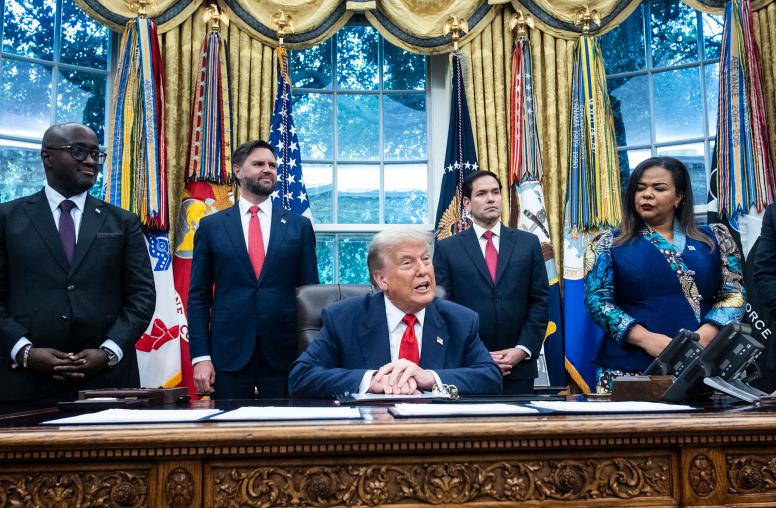Fostering a State-Society Compact
U.S. Leadership and the Challenge of State Fragility Policy Briefs
The Fragility Study Group is an independent, non-partisan, effort of the Carnegie Endowment for International Peace, the Center for a New American Security and the United States Institute of Peace. The chair report of the study group, U.S. Leadership and the Challenge of State Fragility, was released on September 12. This brief is part of a series authored by scholars from the three institutions that build on the chair report to discuss the implications of fragility on existing U.S. tools, strategic interests and challenges.
Since the end of the Cold War, every President has been forced – sometimes proactively, sometimes reluctantly – to conduct war in a fragile state. Each time, the U.S. has tried a different strategy in an attempt to learn from past mistakes. Yet regardless of the particulars—composition of forces, leadership, and international engagement—in each case the states remained fragile or failed and required ongoing international intervention for years to come. After a quarter century, it appears to many that, in the fragile states where the U.S. has committed the most money, blood, and effort, there are no solutions.
Why are these countries not able to rebuild, as Germany and Japan were able to after World War II? Why have none of our largest interventions in the post-Cold War era seemed to work?
In fact, as James Dobbins and Laurel Miller of RAND have found, international post-conflict efforts have been on the whole far more successful than is generally acknowledged.1 But recent high-profile U.S. failures have been particularly costly to the idea of U.S. leadership and effectiveness.2 The reality is that the U.S. has tended to focus on rebuilding state structures through outside assistance. But in the absence of an inclusive state-society compact, post-conflict states are extremely likely to return to conflict.3 It’s time to shift our focus from outside state-building to helping societies rebuild themselves from the inside.
Stephen J. Hadley is the chair of the board of directors at the U.S. Institute of Peace and Rachel Kleinfeld is a senior associate at the Carnegie Endowment for International Peace.



